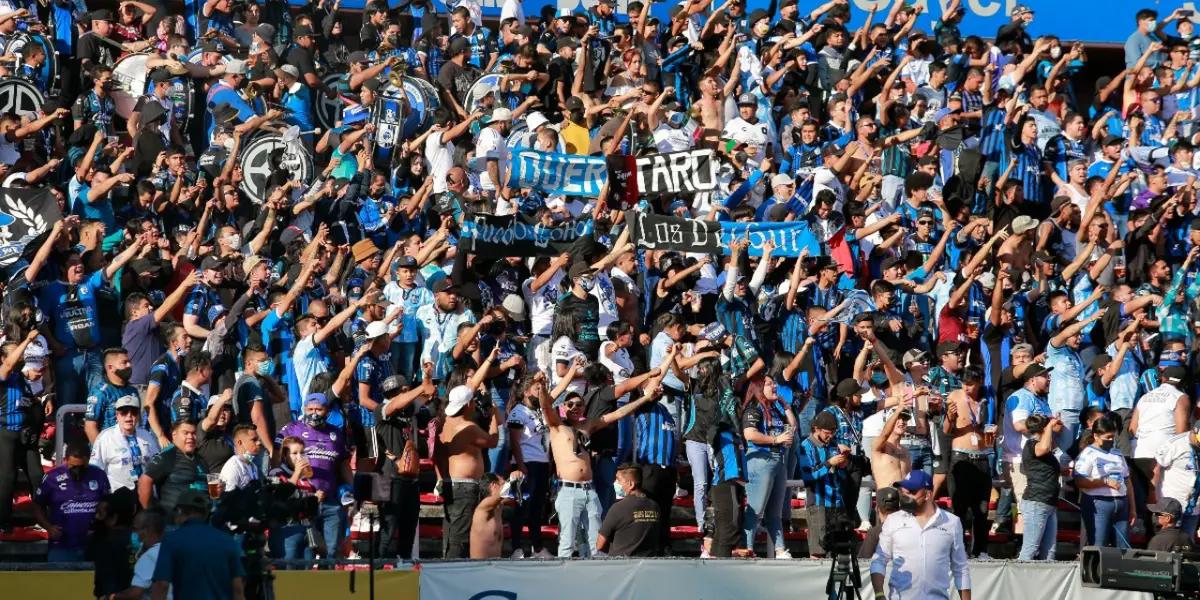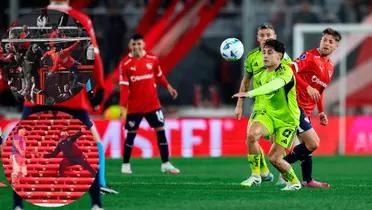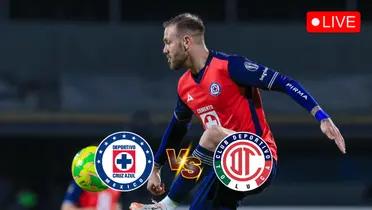How did the barras get into Mexican soccer, which triggered the Liga MX brawl?
The tragedy that occurred in the Querétaro vs Atlas match has its origins in the 90s.

After the tragedy that occurred in the Queretaro vs Atlas match yesterday, everyone is wondering, how did the barras come to Mexican soccer, which detonated the fight in Liga MX?
More news about Liga MX:
Was the tragedy that occurred in the Liga MX match Atlas vs Querétaro premeditated?

The question is very important to understand how it was possible for such a tragedy to happen in a game where there were families who had to flee the stands to take shelter from the violence.
How did the barras come to Mexican soccer?
According to Mexican media reports, the barras arrived in Mexico in 1996 through Andrés Fassi, who at the time was the owner of Grupo Pachuca and vice-president of the Tuzos.
Before continuing, the barras, or "animation groups", as they are also known, are organized groups of fans of soccer clubs that attend matches and support their teams.

Unfortunately, however, these groups have also clashed with other rival barras, causing events such as the tragedy that occurred yesterday at the Corregidora Stadium in Querétaro.
These groups, which used to be common only in Central and South America, arrived in Mexico when Fassi traveled to Costa Rica to close the signing of Rolando Fonseca to take him to the Tuzos.
However, on that trip, the manager also met the Saprissa barra, which left him with the desire to implement something like this in Mexico, especially because of a recent experience he had had with his team.
In that year of 1995, Pachuca had just lost the final for promotion to Liga MX against Celaya, and Fassi had in mind that the atmosphere in the stadium was very subdued.

1996: the year of the debut of the barras in Liga MX
With this idea in mind, the manager returned from Costa Rica with the Chilean Eduardo "Lalo" Gonzáles Tapia and the Costa Rican Jorge "Chino" Díaz, who, just as they had created the Saprissa barra, were in charge of creating the "Ultra Tuza".
With this project, the Pachuca barra took shape and on January 25, 1996, the "Ultra Tuza" made its debut in Mexican soccer, in a match between the Tuzos and Club América.

And just half a year later, when Pachuca was promoted to the First Division of Mexican soccer, the barra also rose with them, and other Liga MX clubs decided to replicate this model.
What other barras exist in Liga MX?
From that point on, barras began to proliferate in Liga MX and the following barras emerged, which are the best known in Mexican soccer.
La Irreverente and Legión 1908, from Chivas.
La Monumental, and Ritual del Kaoz, of Club América
La Perra Brava, of Toluca
La Adicción Rayada, of Monterrey
Los Lokos de Arriba, of Leon
La Rebel, from Pumas UNAM
Los Hijos del Kraken, from Mazatlan FC
La Masakr3, from Xolos de Tijuana

More news about Liga MX:
Liga MX brawl: After the Querétaro-Atlas match, the visiting teams' supporters' clubs are suspended
More news

THE GANG IS HERE! First Argentine Stars Arrive in Buenos Aires for Final Qualifier Push!
01/09/2025

THE LAST DANCE! Lionel Messi Confirms His Final World Cup Qualifier in Argentina!
29/08/2025

TRANSFER COLLAPSES! Julio Enciso Fails Medical Exams, Returns to Brighton!
27/08/2025

Vini doesn't feel entirely comfortable at Real Madrid anymore and is seeking a future at another club
26/08/2025

HERE WE GO! Piero Hincapié Says YES to Arsenal, Club Prepares Final Bid for Leverkusen Star!
26/08/2025

THE REAL MADRID SHOWDOWN: Nico Paz's Future Sparks a Bidding War Across Europe!
25/08/2025

SOUTH AMERICAN SHAME: Independiente vs. U. de Chile Match Canceled After Horrific Incidents!
21/08/2025

Rodrygo Benched by Xabi Alonso: The End of an Era at Real Madrid?
20/08/2025

PARIS IN PARIS! The New Superclub, Paris FC, Rises to Threaten PSG-Marseille Rivalry!
20/08/2025

PSG’s €850M Budget is 30x Larger Than the Smallest in Ligue 1!
19/08/2025

THE DEBUTS ARE HERE! Estupiñán & Modrić Step Onto the San Siro Stage!
18/08/2025

CONTROVERSY IGNITES! Barcelona Opens Season with a Contested 2-0 Victory Over Mallorca!
18/08/2025

SCANDAL ESCALATES: Donnarumma's Harsh Letter Responds to Luis Enrique's Super Cup Snub!
15/08/2025

Franco Mastantuono: A New Number 30 for Real Madrid with a Nod to the Past
14/08/2025

HISTORY MADE! PSG Wins First-Ever Super Cup Title in Thrilling Penalty Shootout!
14/08/2025

Mastantuono Arrives at Valdebebas for Real Madrid Presentation
13/08/2025

ON AND OFF THE PITCH: Is Nicki Nicole the New WAG of Barcelona's Lamine Yamal?
13/08/2025

Donnarumma Bids Farewell to Paris Saint-Germain at the Peak of His Career
13/08/2025



